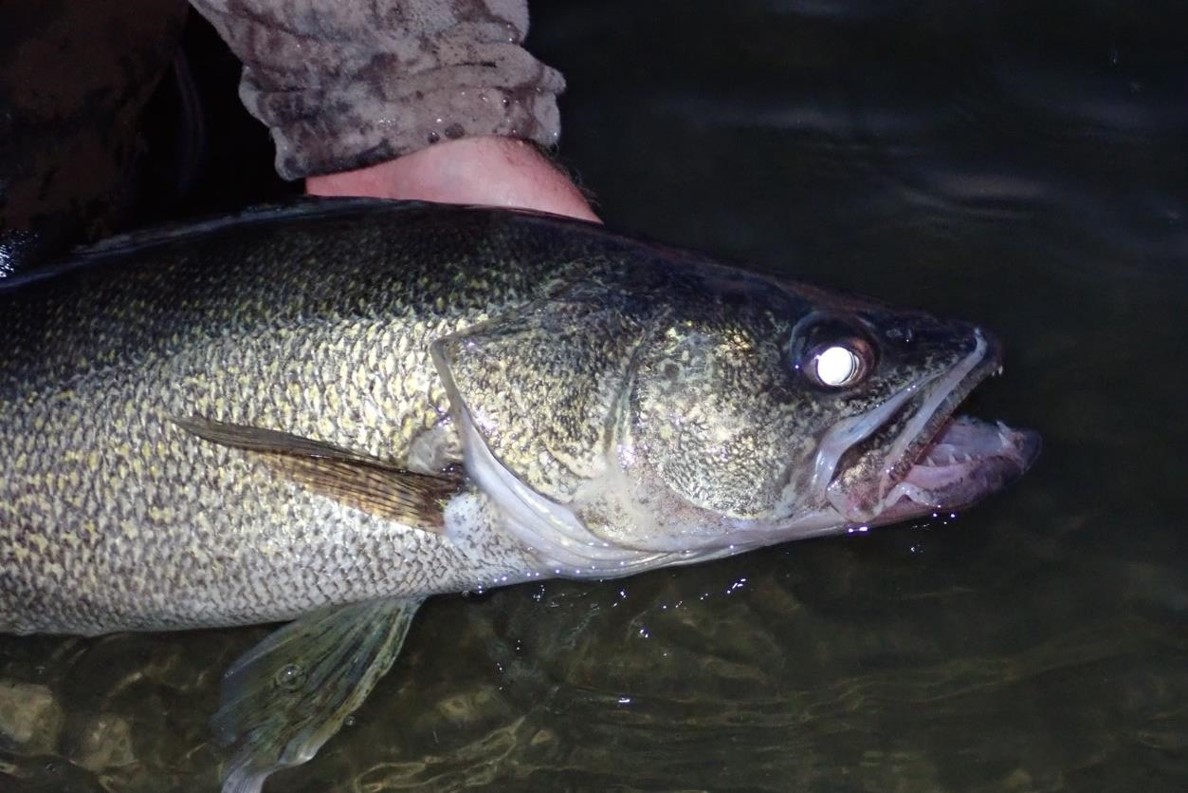
By Daryl Bauer, Fisheries Outreach Program Manager
Catch and release is a fact of modern sportfishing. Period. End of discussion. Whether by regulation or personal choice you are going to be releasing at least some of the fish you catch. Since you are going to be releasing fish, you need to do it right. If the fish do not have a great chance of survival, catch & release is not going to be a benefit to our fisheries.
I have blogged about this lots of times. This would be a great time to share a recent news release on the topic, again:
Handle fish with care when releasing them
Whether you intend to release a fish you catch or plan to legally keep it, the fish should be handled properly. For the fish’s sake – and yours.
Any fish you do not intend to keep should be returned to the water immediately with as little stress to the fish as possible.
That means minimal handling of the fish.
Their coat of slime can make that challenging. The slime is what protects them from diseases and parasites, but it also potentially makes grasping and holding them difficult. The more a fish is handled, the more its protective slime coat is compromised. The best way to release a fish without damage is to remove the hook and release the fish while standing in the water. For boat anglers, net the fish, if possible, and remove the hook while the net and fish still are in the water.
For removing hooks from fish, use needle-nose pliers or forceps. If you plan on releasing all your fish, use the pliers to bend down the barb on the point of the hook, making hook removal easier.
Another tool you can use is a net made of fish-friendly material that minimizes stress on fish.
“The best fish handling is to keep a fish in the water as much as possible,” according to Daryl Bauer, fisheries outreach program manager for the Nebraska Game and Parks Commission. “Keep the fish in the water, handle them in the water, remove hooks, hold them up quickly, snap a photo, let ’em go.”
When holding a fish out of the water for a photo, the preferred method is to hold larger fish horizontally, supporting them from below.
When fishing, anglers also should avoid playing the fish to exhaustion and avoid touching a fish’s eyes or putting fingers in a fish’s gill flaps.
Knowing the sharp parts of a fish is the first step in avoiding them. Catfish and bullheads have sharp, barbed spines located on each pectoral fin and the dorsal fin. Carp have spines in the anal and dorsal fins. And white bass, striped bass, wiper, largemouth bass, smallmouth bass, bluegill, sunfish, and crappie have spines in their fins that can cause a small puncture.
On the other hand, if you want to harvest some fish for a meal, there are ways to handle that. A bucket of water or stringer will keep fish for a short time; otherwise take a cooler of ice to the lake. Place the caught fish on ice immediately.
“Fish are a perishable food product and the quality of the meal is only as good as the handling of the fish after the catch,” said Larry Pape, aquatic education specialist Game and Parks. “If possible, fish should be kept alive until just before cleaning.”
If you are just getting into fishing and want more details on planning a fishing adventure, a helpful resource is the Game and Parks’ Going Fishing Guide, available at OutdoorNebraska.gov by searching “Learn to Fish.” Purchase a fishing permit at OutdoorNebraska.gov.
Let me make a few additional brief comments: I have watched a lot of people handle fish. Watched a really nice pike caught and handled earlier this spring. What I see is a lot of fish out of the water too long. Remember, keep them in the water as much as possible!
To speed things up, make sure you have those hook removal tools handy, at all times! They should be in a pocket, in your waders, within easy reach before you make the first cast!
Lastly, if they look like they have been rolled in Shake and Bake, they have been mishandled! Do NOT put them on the bank, on the ground, on the bottom of the boat. Again, keep ’em in the water as much as possible. If you have to take them out, put them on a clean, WET surface.
